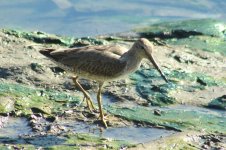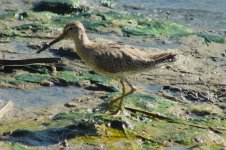Dabs
Brian D
The bird in the attached photos was seen in a river foraging with Greater Yellowlegs and Lesser Yellowlegs nearby. Its size seemed to me to be comparative to a Greater Yellowlegs. The legs are distinctly yellow, but it definitely is not a Yellowlegs species, with that "heavy" bill an overall appearance. I have received feedback that it could be a Willet.
I would appreciate assistance with the bird's ID.
Thanks
Brian
I would appreciate assistance with the bird's ID.
Thanks
Brian











